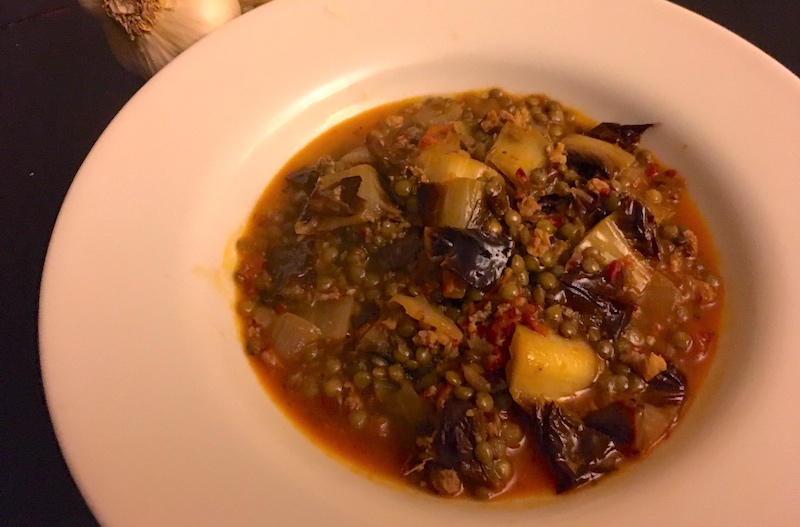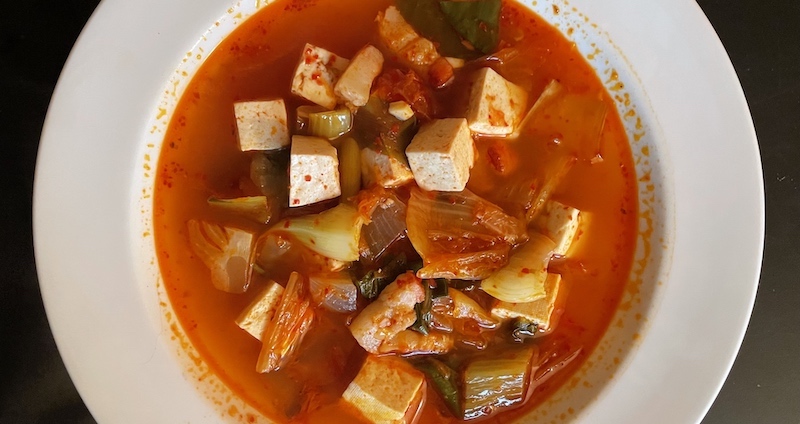
Winter Warmer: Quick Kimchi Stew Comes Together in a Flash
Even in the coldest months we keep our house at a moderate 66 degrees, both to save energy and money, though I've been known to sneak it up a degree (to 67!) if the chill begins to seep too far into my bones even under several layers of clothing.
In the past couple of days our furnace kicked on for the first time this fall, which inevitably signals the beginning of serious soup, stew and braising season around here. Warming from the inside out, not just filling growling bellies, is the point of setting down a steaming bowl in front of my family, and we keep them in regular rotation through the cold months.
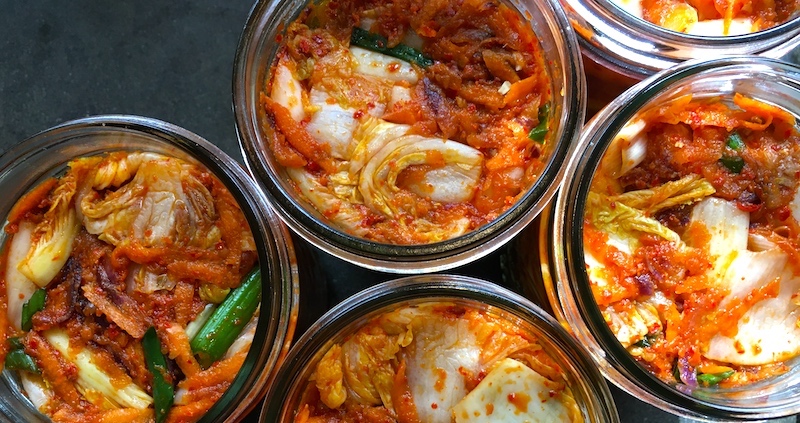
Some soups and stews benefit from spending hours melding their flavors in a big pot on the stove, filling the house with an aroma that promises something hearty and mouthwatering to come. Others can come together in less than 30 minutes—I see you Creamy Tomato Soup and your cousin, Split Pea—or can be made ahead to serve when the need arises. The stew below is one of those, quick to make but one that is equally happy to simmer on the stovetop or even wait in the freezer for its debut.
Since I now have homemade kimchi on hand, it's a handy solution for one of those I-don't-feel-like-cooking nights when inspiration and/or time are in short supply. If you don't make your own kimchi, I heartily recommend locally produced Choi's Kimchi or those available at local farmers' markets.
This recipe calls for pork belly, but it's also fantastic with smoked bacon, shredded leftover chicken or even no meat at all. Exquisitely flavored, it needs nothing more than the addition of fluffy rice to make a company-worthy feast.
Kimchi Stew
Adapted from Susana Holloway
2 Tbsp. vegetable oil
1/2 lb. pork belly, in 1/4" dice
1/2 onion, diced
3-4 cloves garlic, minced
2 c. (1 pint) napa cabbage kimchi
4 c. chicken stock
1 block firm tofu, cut in 1/2" dice
1 Tbsp. fish sauce
Salt and pepper to taste
Chopped cilantro or sliced green onions for garnish (optional)
Heat vegetable oil in a soup pot or Dutch oven over medium heat. When the oil shimmers, add the pork belly. When it has rendered most of its fat, add onions and sauté until tender, then add garlic. When garlic is warmed, add in kimchi and stock, bring to a simmer and cook on low heat for about 30 minutes. Add tofu and fish sauce and simmer for a final 5-7 minutes to warm tofu through. Season to taste with salt and pepper if needed and garnish with cilantro or green onions if desired.
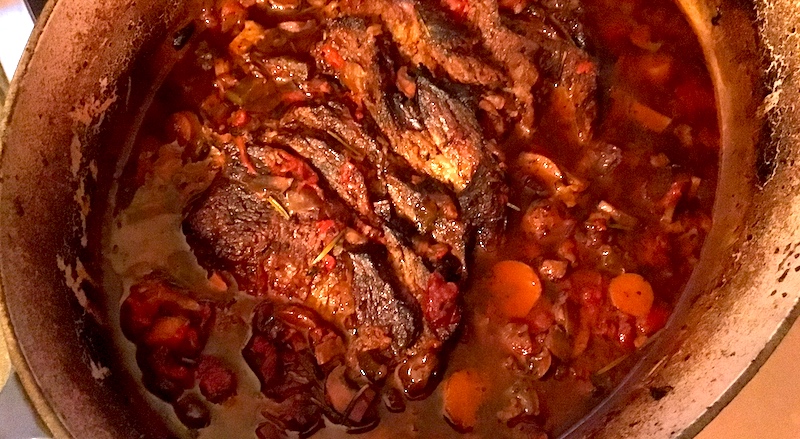
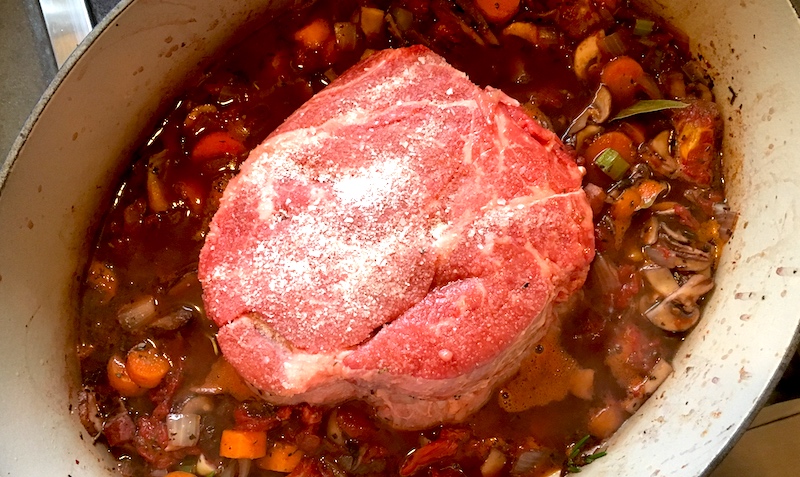
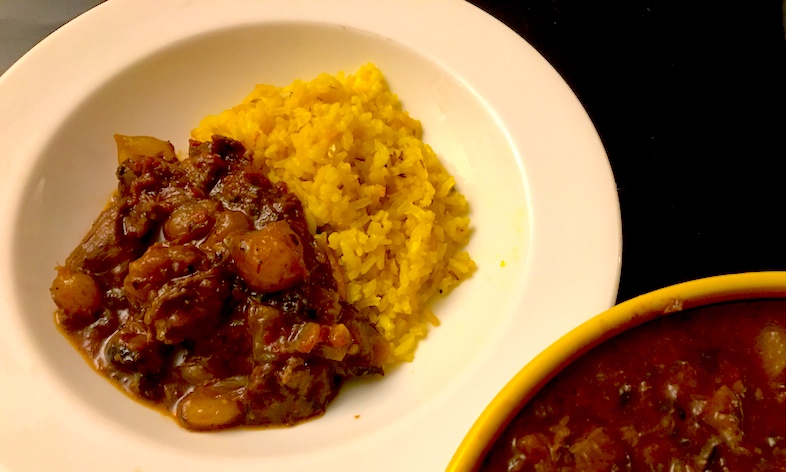
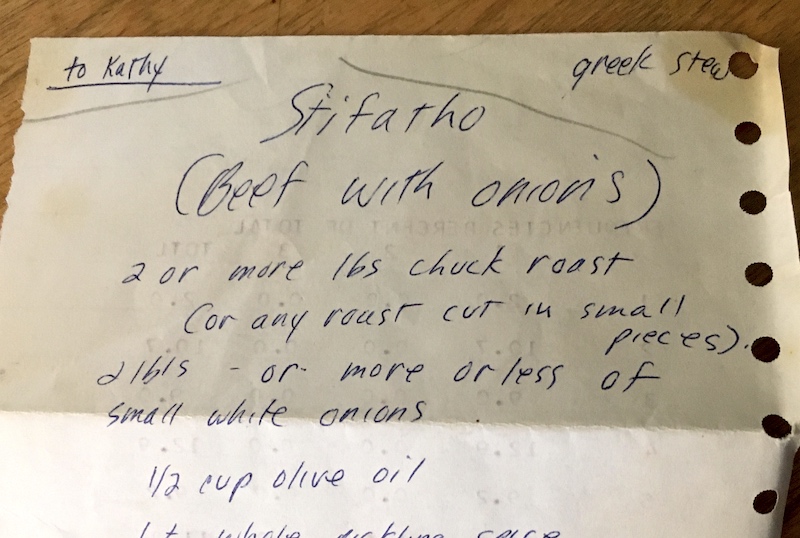 My first introduction to this particular stew was waaaaaaay back in high school when I became friends with a young woman who lived in our suburban neighborhood with its cookie-cutter ranch houses and striving white-collar families. Exotic in my stolidly middle-class experience, their house was littered with Balinese art and South Asian throws. Shelves of books rather than American colonial furniture were the focus of their decor, and when I was lucky enough to be invited for dinner they made curries and ethnic stews rather than noodle casseroles.
My first introduction to this particular stew was waaaaaaay back in high school when I became friends with a young woman who lived in our suburban neighborhood with its cookie-cutter ranch houses and striving white-collar families. Exotic in my stolidly middle-class experience, their house was littered with Balinese art and South Asian throws. Shelves of books rather than American colonial furniture were the focus of their decor, and when I was lucky enough to be invited for dinner they made curries and ethnic stews rather than noodle casseroles.